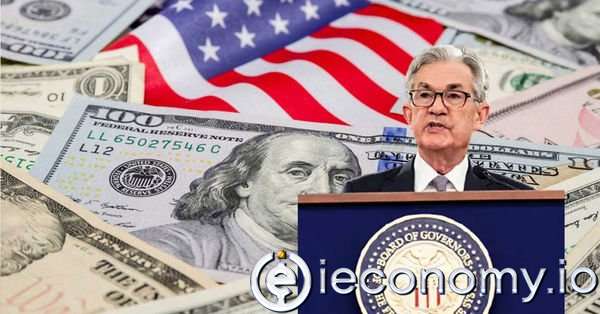4305
0
75 Basis Points Interest Rate Hike from the US Federal Reserve (FED)
The US Federal Reserve (Fed) raised interest rates by 75 basis points at its July meeting, which was the expected figure. The 150...

Yazar: James Gordon
Yayınlanma: 28 Temmuz 2022 05:03
Güncellenme: 26 Aralık 2025 22:43
75 Basis Points Interest Rate Hike from the US Federal Reserve (FED)
The US Federal Reserve (Fed) raised interest rates by 75 basis points at its July meeting, which was the expected figure. The 150 basis point rate hike at the June and July meeting was considered the sharpest tightening move since the early 1980s.
The US Federal Reserve (Fed) raised its policy rate by 75 basis points to 2.25-2.50 percent. While the interest rate decision was unanimous, the text of the decision emphasized the Fed's message that it is highly attentive to inflation risks. It was stated that the Federal Open Market Committee (FOMC) has a strong commitment to return to the 2 percent target. In the text, it was underlined that spending and production have softened despite wage increases. The Fed re-emphasized that continued rate hikes within the target range would be appropriate. In the text of the decision, it was noted that the policy may be reviewed if there are risks to the implementation of the targets. For the first time at this meeting, Fed Vice President for Financial Institutions Michael Barr and Boston Fed President Susan Collins were also present. US Federal Reserve Chairman Jerome Powell made the following statements: "Our economy, which has weathered many challenges over the past two years, has proven resilient. If we want sustainable labor market conditions, it is critical that we bring inflation back to our 2 percent target. The job market is incredibly tight, but inflation is too high. Against this backdrop, we have decided to raise the policy rate by 75 basis points. In addition, we are continuing our balance sheet reduction. Recent indicators show a softening in spending and production. There are tight financial conditions. Business fixed investment seems to have fallen in the second quarter. Yet the job market has remained incredibly tight. The unemployment rate is at a 50-year low and hiring is very high. Overall, the strong labor market tells us that demand is still strong. Inflation remains well above our long-term target of 2 percent. Overall, economic activity is slowing, but demand remains strong and price pressures are showing up in many goods and services. In the coming months we will see evidence that inflation is coming down. Rate hikes will depend on incoming data and the outlook for the economy. We are really very careful about the risks posed by inflation. We are prepared to take the necessary measures to bring inflation back to our 2 percent target. It would be appropriate to slow down the rate hikes at some point. We would not hesitate to take a bigger step if necessary. If necessary, the Fed would raise interest rates by more than 75 basis points. Additional rate hikes may come. We will decide at each meeting based on the data. The FOMC forecasts rate hikes in 2023 and will update the forecasts in September. Supply may approach demand when growth is below potential. Fed policy does not aim to create a recession. I don't think the US is in a recession right now. The Fed will continue to use its tools to balance supply and demand. We could have a big rate hike, but we haven't decided on that yet."İLGİLİ HABERLER





European stocks soared and focus shifted to German retail sales after Powell's speech!

Forex Signal For TRY/USD: Inflation Slowdown in November.

Forex Signal For GBP/USD: Bullish Trend Still Not Breaking While Recovery Continues.

Forex Signal For EUR/USD: Starry US Data Points to Higher Fed Increases.

Forex Signal For BTC/USD: Downside Continues as Bitcoin Recovery Moves Less.
En Popüler Haberler
Yorum Yap
Yorumlar
Henüz yorum yapan yok! İlk yorumu siz yapın...